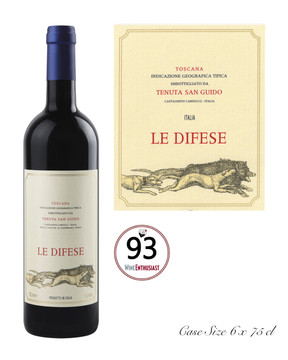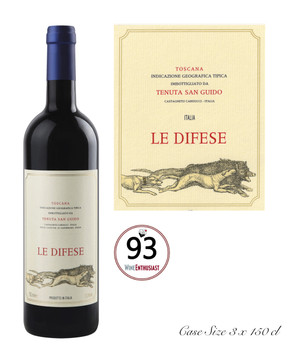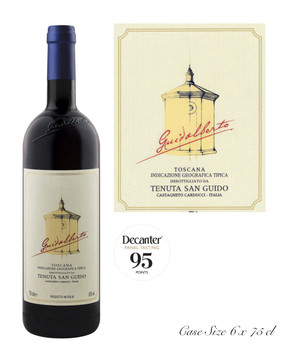
Tenuta San Guido Le Difese 2020.
Fruit for Le Difese is selected from Tenuta San Guido estate’s younger vines. Fermentation for both varieties took place on the skins in temperature-controlled stainless steel vats for 12 days. The wine was matured for 12 months in second hand oak barrels.
HARVEST NOTE: Autumn and early winter were particularly humid, with persistent rains and mild temperatures. From the second week of February the cold became more intense with temperatures often below 32 °F. Spring started quite early, although conditioned by strong sea winds and some rain, but the mild temperatures triggered the budding of the early varieties. At the end of March a disturbance from the Atlantic caused a sharp drop in temperatures and some night frosts. Luckily, this did not create excessive damage. On the contrary, it enabled the secondary buds to come forward, resulting in a lower production and enhanced quality and concentration of fruit. The continuation of spring was optimal with normal temperatures and sporadic rains that enriched the water reserves of the soils. From mid-June, except for an isolated rain, the climate stabilized with sunny and hot days with temperatures sometimes above the seasonal average and peaks of 88-90 °F. Except for the first ten days of July, the remaining summer period was very hot with no rain. Thanks to the good water availability of the soils and the reduced production per plant, the latter did not suffer from any stress.
TASTING NOTE: Bright red with purple nuances. Crisp acidity and pleasant palate of every day wine drinking, with juicy red fruits. A very good wine that is meant to be enjoyed young.
Fruit for Le Difese is selected from Tenuta San Guido estate’s younger vines. Fermentation for both varieties took place on the skins in temperature-controlled stainless steel vats for 12 days. The wine was matured for 12 months in second hand oak barrels.
HARVEST NOTE: Autumn and early winter were particularly humid, with persistent rains and mild temperatures. From the second week of February the cold became more intense with temperatures often below 32 °F. Spring started quite early, although conditioned by strong sea winds and some rain, but the mild temperatures triggered the budding of the early varieties. At the end of March a disturbance from the Atlantic caused a sharp drop in temperatures and some night frosts. Luckily, this did not create excessive damage. On the contrary, it enabled the secondary buds to come forward, resulting in a lower production and enhanced quality and concentration of fruit. The continuation of spring was optimal with normal temperatures and sporadic rains that enriched the water reserves of the soils. From mid-June, except for an isolated rain, the climate stabilized with sunny and hot days with temperatures sometimes above the seasonal average and peaks of 88-90 °F. Except for the first ten days of July, the remaining summer period was very hot with no rain. Thanks to the good water availability of the soils and the reduced production per plant, the latter did not suffer from any stress.
TASTING NOTE: Bright red with purple nuances. Crisp acidity and pleasant palate of every day wine drinking, with juicy red fruits. A very good wine that is meant to be enjoyed young.







